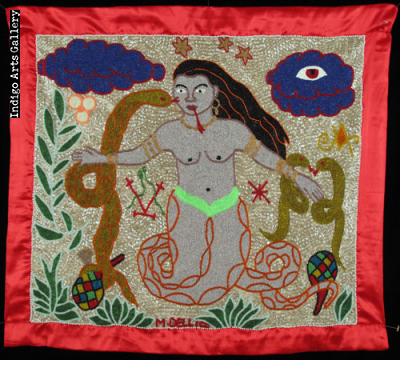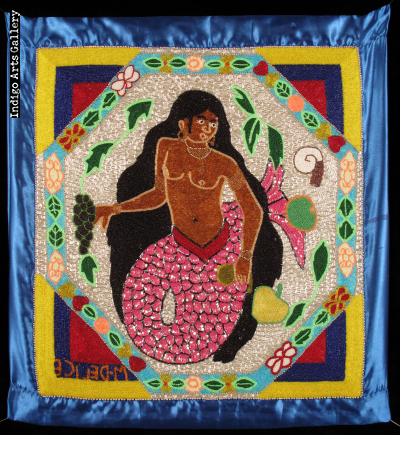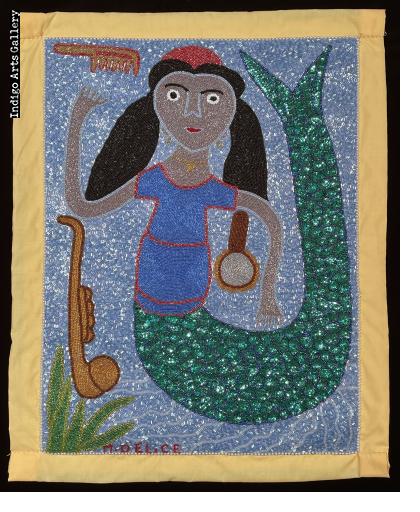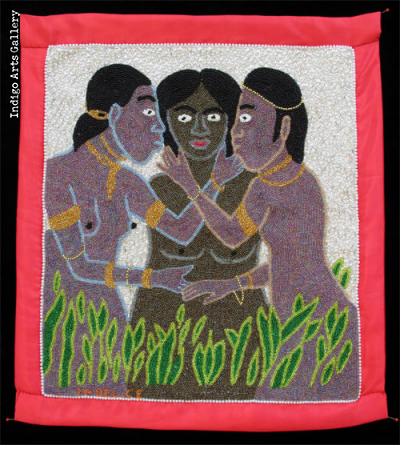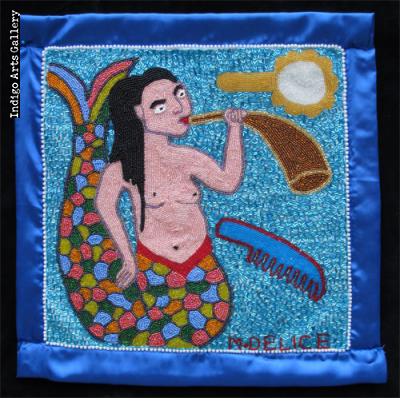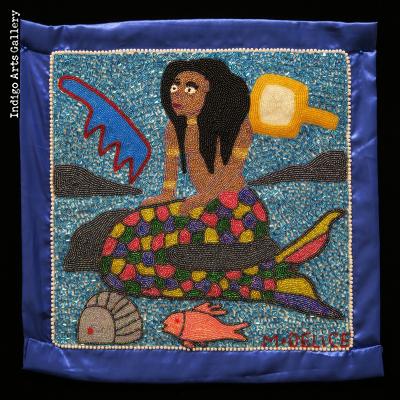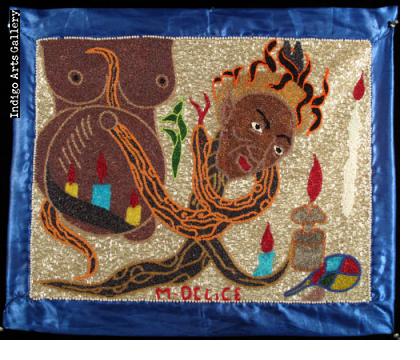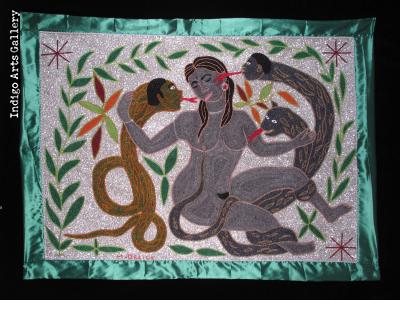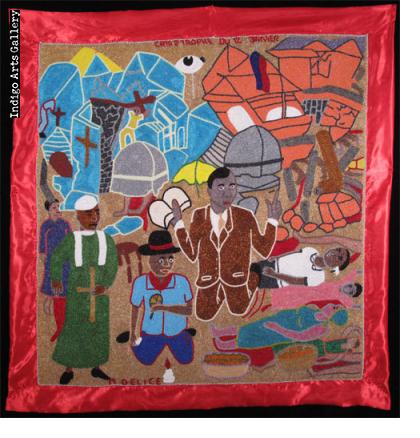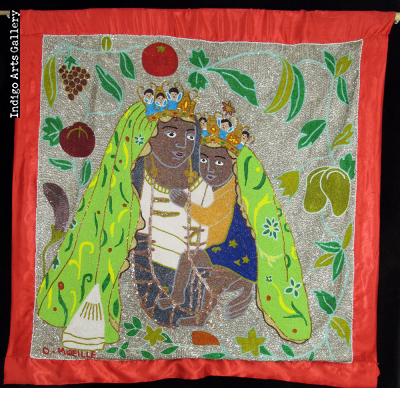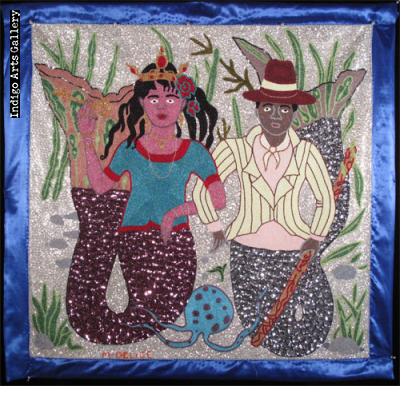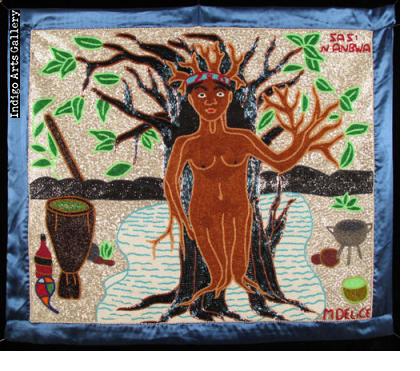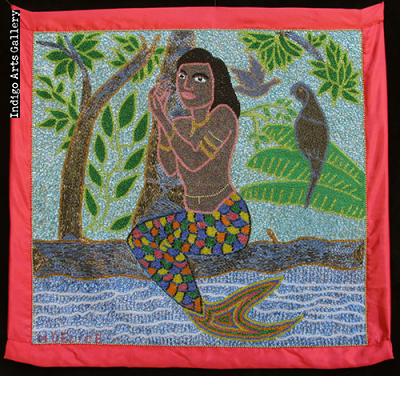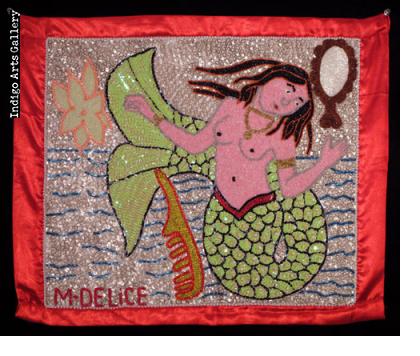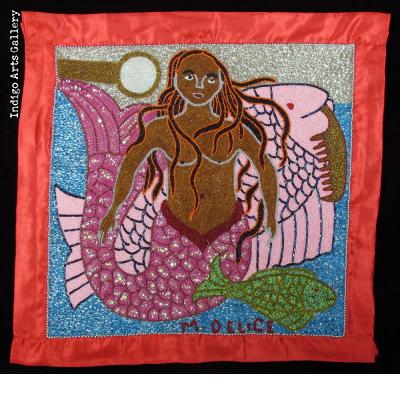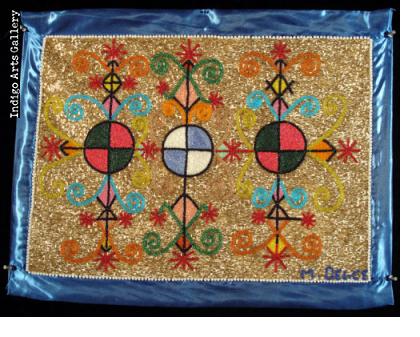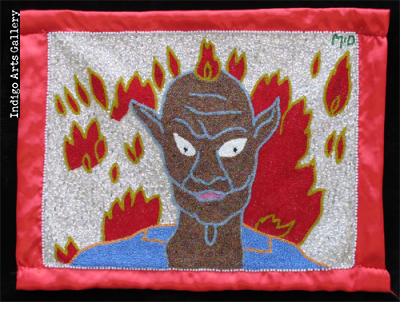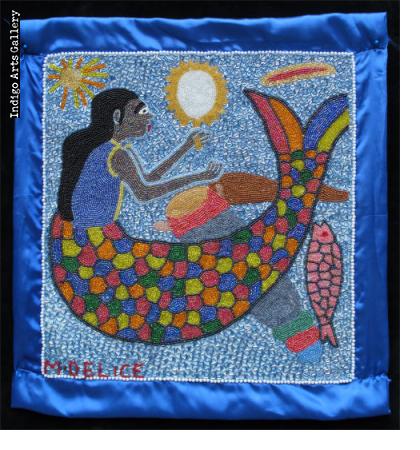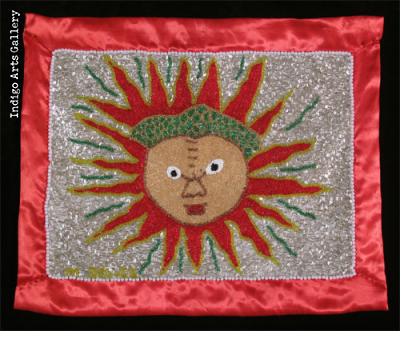About the Artist
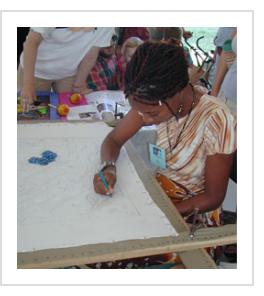
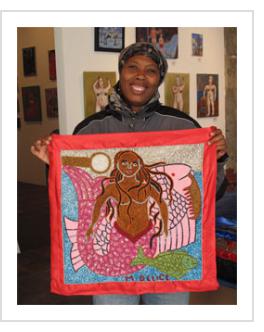
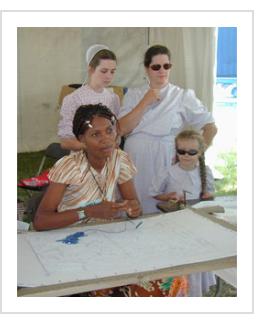
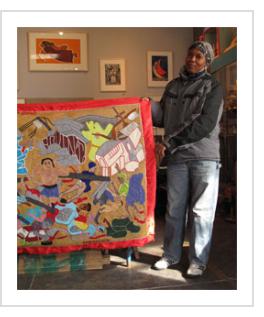
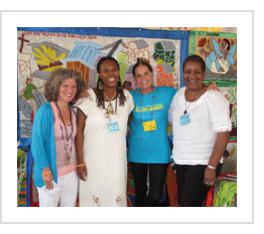
Mireille Delice (also spelled Delismé) was born in 1965, in Haiti (Biography below adapted from Wikipedia and other sources).
Delisme's career began in 1986, when taught sewing and beading techniques by her cousin, Myrlande Constant . Soon after, she began working alongside her cousin in Port-au-Prince at a factory embellishing wedding dresses for export. Following the closing of the factory in 1990 due to political and economic issues, Delisme recalls having a dream in which she was visited by the spirits. When relating the dream to her father, an oungan (vodou priest), he interpreted the message to be from the Vodou spirit or lwa Erzulie. Erzulie, the spirit of love, is represented in vodou tradition by a heart, which was the same design symbolized in Delisme's dream. Using beads left over from her time at the factory, the heart symbol visualized in her dream became the sequin design for her first drapo (flag).
Delisme recollects having more than one dream in which spirits visited her. During the third dream, she was delivered the message that, “I did not have to work in the factory, but I could learn to work for myself and earn for my family.” In 1990, having lost her job at the factory in conjunction with the lwa messages, Delisme decided to begin her life as an independent artist at age 25. Delisme continued to master her needlework skills by creating more drapo, finding design inspiration from her dreams and Vodou symbols given to her by her father. Delisme's beadwork incorporates vévé designs that represent traditional Vodou deities and are used to explain divinity and give clarity to life's expressions and meanings. Her flags represent her spirituality and are used for guidance, wisdom, and healing. Her bright color combinations add to the mood and spirit of each piece. Since becoming an independent artist, Delisme has built an atelier in Haiti. The workshop was constructed to more efficiently assemble the bead-work for her drapo designs. Delisme describes the envisioned designs to a paid artist to be drawn or traced for the drapo and once done, is passed on to be beaded by Delisme herself or one of the seven artists employed at the workshop.
In January 2010, Delisme's hometown was at the epicenter of a massive earthquake. Delisme and her family were among those affected by the earthquakes destruction. “I felt I had to express the disaster in Haiti in my artwork."
In 2011, Delisme's work Catastrophe du 12 Janvier, a Vodou flag created to depict the crumpled buildings and the bodies of the dead caused by the earthquake, was part of an exhibit at the Museum of International Folk Art titled “The Arts of Survival: Folk Expression in the Face of Natural Disaster.” The same work was exhibited in Kathmandu, Nepal in Spring, 2022 as part of the Kathmandu Triennale. Delisme has displayed and sold her works at the Santa Fe International Folk Art Market for many years (2011, 2012, 2013, 2016 and 2024).

